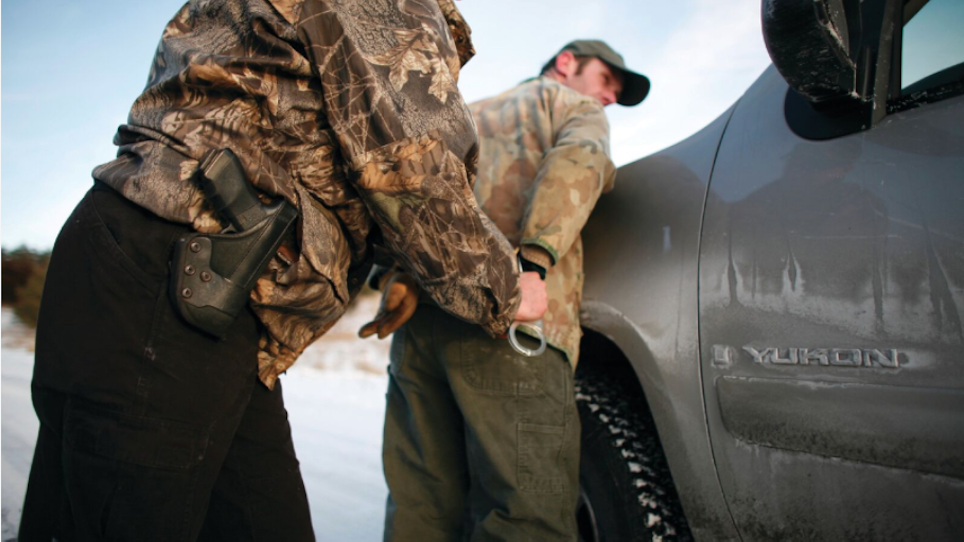Seven Indicted in Ohio for Alleged 11-year poaching ring
Seven individuals who allegedly participated in a multi-state poaching enterprise suspected of illegally killing white-tailed deer and wild turkey have been indicted, with the alleged crimes dating from 2006-17.
The Ohio Department of Natural Resources announced the indictments, which concluded after a multi-year investigation involving multiple state agencies. Among them were the ODNR Division of Wildlife, Ohio Bureau of Criminal Investigation (Environmental Enforcement Section), the Ohio Attorney General's Office (Environmental Enforcement Section), West Virginia Natural Resources Police, Pennsylvania Game Commission, Texas Parks and Wildlife Department, and Washington Department of Fish and Wildlife.
This investigation spanned across Ohio, West Virginia, Pennsylvania, Texas and Washington. One individual, Jason Cue, has pleaded guilty in West Virginia to charges related to the investigation. Those indicted face a wide range of charges that included engaging in a pattern of corrupt activity, hunting without permission, failure to permanently tag turkey or deer, grand theft and others.
West Virginia Governor Signs Sunday Hunting Law
West Virginia has removed prohibitions against hunting on Sunday, with Gov. Jim Justice signing a bill into law allowing the state’s public lands to be open.
“People drive right through West Virginia to Ohio or wherever it may be to be able to hunt on Sunday,” Justice said. “We lose those dollars because they want to be able to hunt an entire weekend. This will provide additional hunting recreation for our visitors and residents and result in a major economic impact for our small rural businesses. Today is truly historical.”
More than 1.5 million acres of public land will be open now for hunting. The National Shooting Sports Foundation estimates an additional $155 million will be added to West Virginia’s economy thanks to the new law.
Hunting on Sunday on private land was approved in the 2017 legislative session. Prior to that, it was legal in some counties due to ballot measure but remained illegal in most of the state on private and public land.
Hunters finally pushed hard enough to end the prohibition of being able to hunt on their own property last year. The addition of the public land includes some million acres of U.S. National Forest land, about 71,000 acres of state forest land and about 380,000 acres of West Virginia wildlife management areas.
North Georgia Whitetails Getting a Harder Look
Researchers with the University of Georgia Deer Lab are tracking collared deer in north Georgia during a two-year study to determine what’s causing their decline.
The study is being conducted on the 20,900-acre Blue Ridge Wildlife Management Area and 30,000-acre Coopers Creek WMA. Both are in the rugged, mountainous Chattahoochee National Forest in extreme north Georgia and comprised almost entirely of hardwoods.
The two-year study will consist of capturing up to 90 adult does using rocket nets and tranquilizer darts. The does will be outfitted with GPS collars and vaginal implant transmitters; the former is for tracking and the latter for location feedback when they drop fawns. Additionally, up to 120 fawns will be captured and outfitted with VHF tracking collars.
Researchers will monitor location of does via GPS, which will transmit every 1-4 hours to determine home ranges and habitat use. They also will investigate fawn mortalities to try to identify the cause of death, and also track survival rates. Infrared trail camera grids will be used to evaluate space-use among deer, predators and wild pigs. The area has seen an increase in the black bear population; feral pigs also have been part of the landscape for years and compete with deer for food.
With the mountains dotted with fields and valleys, the project also will look at deer home ranges and habitat selection. This will include areas of fawning and summer forage, such as young forest growth, possible impacts of predation in these areas, and the influence of mast in areas deer use.
With the uptick in predators, state wildlife officials reduced the doe harvest limits in the area but the whitetail population continued to decline. Among the benefits this project may have are identifying factors limiting deer population growth, targeted habitat management for deer and other wildlife, and recommendations to help improve management.
Featured photo: Mark Palas






